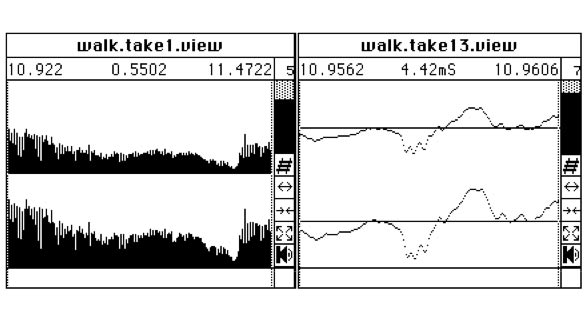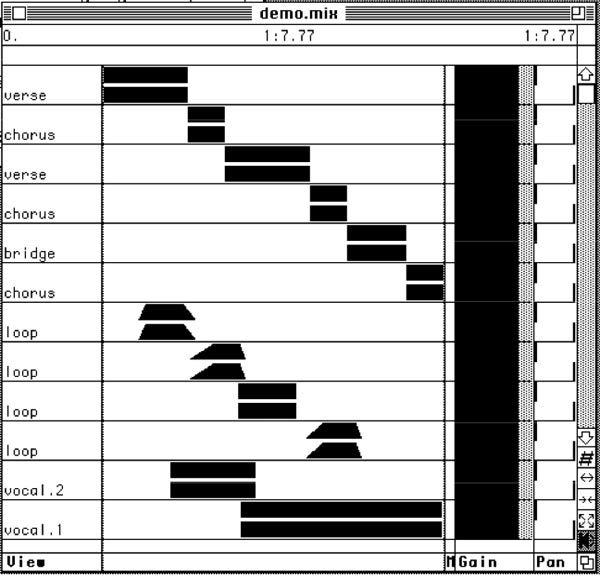Digital Recording: The Dyaxis I DAW
The compact disc was introduced in the fall of 1982. It was the first consumer digital audio format and was a major advancement in both the quality and convenience of music. It didn’t catch on immediately…there were only about 10,000 players sold the first year and you could only select from a few hundred titles…but the compact disc and PCM audio triggered a revolutionary change in the way that music was recorded and distributed.
I was attending graduate school at the California Institute of the Arts in Valencia, California in the early 80s. I left the doctoral program at UCLA to get another masters degree from Cal Arts because I knew some people that were attending Cal Arts and it sounded like the place for me. In the 80s, it was THE place in SoCal to study composition and especially electronic music, which was my area of focus. I studied composition with Morten Subotnick (one of the early innovators in electro-acoustic music), Lucky Mosko and Mel Powell (who received the Pulitzer prize in composition).
My time was spent in the studios experimenting with both analog and digital synthesizers. Because of Mort’s previous association with the San Francisco Tape Center and synthesize guru Don Buchla, Cal Arts had a lot of his machines including analog modular equipment and the latest Buchla 300 and 400 digital machines. It was an amazing time to be working in this cutting edge medium…but there was a problem.
While the sounding generating hardware was increasingly digital, the recording systems used to capture the work that you had done was all analog. There weren’t any digital audio workstations, no ProTools and the nascent world of personal computing didn’t allow you to do much other then make a simple beep sound.
We did have a Sony F1 processor and Beta videotape machine so that we could output our finished compositions to a high quality, stereo digital tape but there was no digital mixing or editing available at the time. Everything was programmed in the Buchla machines before the export. What we needed was a hard disc storage system with the editing and mixing software as featured components.
It came at Cal Arts with the arrival of Dyaxis. I remember Gerry Kearby, a musician and eventual founder of Liquid Audio (the first legitimate digital music download retailer), showed up on day to give all of us a demonstration of the a stereo digital audio workstation that included the ability to edit and mix. Integrated Media Systems, a small company located in Silicon Valley, California, developed it. The software called MacMix ran on the newly introduced Apple Mac Plus computer, a machine that had no hard drive, a CPU that clocked in a blistering at 16 kHz, 1 Meg of RAM (upgradeable to 4 Megs) and sported black and white screen that measured 512×342. The age of the GUI computer had arrived with the icon filled desktop and mouse.
The Dyaxis system was a separate rack mountable unit that had two hard drives (totaling a whopping 100 Megs!) and the signal processing chips necessary to handle the rudimentary editing and mixing requirements. The system allowed recording and playback of 2-channels at 44.1 kHz/16-bit PCM. The Mac Plus displayed the audio waveform. Users could edit the audio and instantly listen to the playback. This was very exciting and Cal Arts purchased one of the first systems.
We were thrilled with this exciting new technology but were somewhat dismayed to learn that there was no backup system. The hard drives on the Dyaxis could store about 10 minutes worth of CD quality audio. Once they were full, there was no way to offload a project other than to playback the output and record it on the Sony F1. In an educational or production environment, there are lots of students or clients that want to use the system but because there was no easy way to walk away with your project while it was in progress, the Dyaxis didn’t actually get much use. Today, students can bring their own 32-gig USB stick or a portable hard drive to work on their audio projects. In fact, most of the students use the same software at their dorm room or home. The age of mega expensive custom system is gone. The costs have dropped to the point that everyone that wants to record and mix music projects can acquire their own hardware.
Studer, one of the most important makers of analog multitrack tape machines, purchased Dyaxis in 1989. They clearly saw digital as the future and acquired Dyaxis to get a jump on the development of their own DAW…the Dyaxis II.
Tomorrow, we’ll look at the New England Digital SynKlavier…one of the mega expensive system that I encountered during my doctoral studies at UCLA in the mid 80’s.



Well you have to start somewhere, I suppose!
This reminds me that I once read that there was a problem with Pro Tools or its modules, back in the late 90’s or around 2000, that meant a lot of commercial releases were degraded in audio quality. I think it was a software programming issue, but can’t remember the detail. Does this ring a bell with you, Mark?
It does. Pro Tools is the ubiquitous tool in recording studios around the world…I have a large PT system myself that is required for my clients use. I do not use it for my projects…too many sonic problems and compromises.